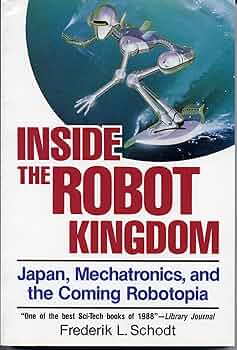
Eyck Freymann: How to Break China’s Minerals Chokehold
Why the allies need a multilateral commercial stockpile This essay is based on a Hoover History Lab working paper, co-authored with Joshua Stinson, William Norris,…
Thought Leader: Eyck Freymann

As Jennifer Burns writes in her excellent new biography of the libertarian economist Milton Friedman, “Many aspects of our contemporary world that today seem commonplace have their origins in one of Friedman’s seemingly crazy ideas. If you’ve had taxes withheld from a paycheck, planned or postponed a foreign holiday due to the exchange rate, considered the military as a career, wondered if the Federal Reserve really knows what it’s doing, worked at or enrolled your child in a charter school, or gotten into an argument about the pros and cons of universal basic income, you’ve had a brush with Friedman.”
Burns, a Stanford University–based historian who also wrote a good biography of Ayn Rand, emphasizes the intellectual over the personal—rarely does her book seem interested in understanding Friedman the man as opposed to Friedman the mind. But Milton Friedman: The Last Conservative shines as an exploration of Friedman’s ideas and accomplishments.
Sharply intelligent, a great arguer, and inclined toward math, this son of Jewish immigrant New Jersey shopkeepers got his master’s degree in economics at the University of Chicago, where his destiny was shaped by his professors and fellow students (including his eventual wife and writing partner, Rose Director) and by the Chicago school of economics’ yen for applying price theory to as many aspects of life as possible. Burns detects a thread of Chicago price theory spun through Friedman’s lifework, which led him to craft “a dizzying array of policies with a consistent theme: setting prices free. This idea underlies everything, from Friedman’s support of school vouchers and his calls to abolish the draft to his insistence that governments stop controlling the price of their currencies.”
Burns guides the reader handily through Friedman’s New Deal and wartime years. She details some of his innovations in statistical analysis, and she relates one of the first times he raised fellow economists’ hackles by coming to overly libertarian conclusions (a paper that fingered the American Medical Association as a price-raising cartel). She also covers his role in helping the Treasury Department develop income tax withholding as an emergency measure for war financing—a temporary policy that, to Friedman’s regret, became permanent.
Burns is impressively effective for a noneconomist at explaining how “monetarism,” Friedman’s philosophy of how a central bank should behave, clashed with the Federal Reserve’s real-world practice and with economic orthodoxy over the last half of the 20th century. The core of monetarism was the belief that the supply of money, mediated by how often it changed hands, is the key factor in price levels—or, in slogan form, that “inflation is everywhere and always a monetary phenomenon.”
This led Friedman to believe it would be better if the Fed did not practice discretionary monetary policy at all, with the money supply simply growing a bit every year based on preset rules. While the Federal Reserve never embraced all of Friedman’s recommendations, Burns skillfully explains how his ideas did importantly shape the inflation-busting efforts of Fed Chair Paul Volcker in the early 1980s.
The tight connection between money supply and inflation that Friedman and Anna Schwartz detailed in their epochal 1963 A Monetary History of the United States seemed to slip in the post-Reagan decades. This worried Friedman, but he ultimately satisfied himself that the connection between money supply and inflation could be rescued by shifting the particular measure of money supply to watch, and by admitting that the rate at which money changed hands was more variable than he first thought. The inflation of the past two years has helped revive the world’s belief in Friedman’s connection between growth in the money supply and growth in prices.
Inevitably for a book published in 2023, this biography at times adopts a modern race-and-gender lens. On race, Burns upbraids the economist for opposing the 1964 Civil Rights Act: While Friedman, as Burns notes, opposed Jim Crow laws, he did reject the aspects of the 1964 law that would give the government the power to compel private citizens to associate with those they did not wish to. He preferred, again, the course of setting prices free: Friedman expected that racial prejudice would be largely priced out of the market in a freer economy.
When it comes to women, Burns sees Friedman relying heavily, and often with insufficient credit, on various female collaborators, stressing Schwartz’s vital role as the original driving force of the research project that led to A Monetary History and the person who gave literary verve to what could have been just a series of historical data charts. When it comes to one of the books that built Friedman’s professional reputation, A Theory of the Consumption Function (1957), Burns provides evidence that two female researchers, Dorothy Brady and Margaret Reid, likely deserved co-author credit.
Friedman’s relationship with his wife Rose is presented (with a couple of personal tragedies and some intellectual disagreements along the way) as solid and vital to his success as a popular writer—though big aspects of it will remain forever opaque, as Rose burned all her correspondence with her husband.
Having written a book this smart and detailed about a libertarian thinker, Burns is oddly reluctant to explain to her readers that there was such a thing as a distinctly American libertarian movement from World War II on.
She notes, for example, that Friedman worked in the 1940s and ’50s with the Foundation for Economic Education and the William Volker Fund. She writes that these groups “were part of a broader backlash against Keynesian economics.” While calling them “important early manifestations of modern American conservatism,” she acknowledges that “neither identified as a conservative organization.”
Yet she does not adequately explain that these organizations were foundation stones of a distinct, nonconservative, more radically pro-market and freedom-oriented libertarian intellectual and activist movement. Nor does she stress that Friedman moved near or in this movement from the time it first coalesced after World War II, alongside his more respectable Republican affiliations. (Friedman had advisory relationships of various levels of closeness with Barry Goldwater, Richard Nixon, and Ronald Reagan.)
As Friedman told me in a 1995 interview, “I have a party membership as a Republican, not because they have any principles, but because that’s the way I am the most useful and have most influence. My philosophy is clearly libertarian.”
Burns recognizes that after Friedman worked near the libertarian economist F.A. Hayek at the University of Chicago in the 1950s, Hayekian ideas and phrases began showing up in Friedman’s writing, and that “shifts in Friedman’s thinking emerged clearly in 1956, during a series of summer lectures at Wabash College.” These events “were one of several invitation-only summer conferences sponsored by the Volker Fund,” and they eventually “would form the seedbed of Capitalism and Freedom,” one of Friedman’s most influential books. She does not adequately explain, though, that those “shifts” represent a more full-hearted slotting, after some early conflicts and disagreements, into the libertarian movement’s beliefs.
That shift in a more libertarian direction is an important part of Friedman’s intellectual evolution. From education to monetary policy, the more integrated he became in libertarian communities of affinity that he valued—from the Mont Pelerin Society to the New Individualist Review—the less he believed government should do. (One of his more radical areas of libertarian activism in later years, arguing against the war on drugs, is not mentioned in this book at all.)
Burns’ discussion of Friedman’s family is thinner than you might expect from a biography of this heft. In one of a mere handful of sentences on his son David, she notes the younger Friedman was an advocate of “anarcho-capitalism” without explaining what that meant in the context of his father’s thinking. But Milton Friedman was part of a movement of intellectuals and organizations in which anarchism was an idea he had to grapple with and be judged against. Friedman, truly no conservative, told me in that 1995 interview that he “would like to be a zero-government libertarian” like his son but was discouraged that he didn’t see enough “historical examples of that kind of a system developing.”
Appearing as it does in the post-Trump era, it is natural that this book would adopt a subtitle like “The Last Conservative.” Donald Trump’s presidency—based on restricting international trade, refusing to touch entitlement spending, hostility to immigrants (Friedman thought illegal immigration was the best kind), and loose Fed policy to goose the economy for the president’s short-term political benefit—was wildly anti-Friedmanite.
Stressing that Friedman was in fact a libertarian would have helped a reader understand how and why he seems a relic to the conservative movement. The current American right has no use for what Burns characterized as an early 21st century “world closer to [Friedman’s] ideal, where capital moved freely across borders, governments retrenched from social spending, and a culture of expressive individualism celebrated freedom above all else.”
Eyck Freymann: How to Break China’s Minerals Chokehold
Why the allies need a multilateral commercial stockpile This essay is based on a Hoover History Lab working paper, co-authored with Joshua Stinson, William Norris,…
Thought Leader: Eyck Freymann
Chris Miller: Robotics Manufacturing: The Rise of Japan
“To the Americans, a robot is a computer attached to a mechanism. To Japanese, a robot is a mechanism attached to a computer.” The future…
Thought Leader: Chris Miller
Dr. Sanjay Gupta: A New Understanding of Parkinson’s Disease
Parkinson’s disease, a progressive movement disorder whose hallmark is damage to the dopamine-producing neurons in the brain, afflicts almost 12 million people worldwide. And the…
Thought Leader: Sanjay Gupta

